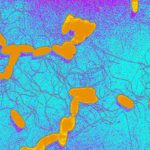Lien vers Pubmed [PMID] – 30674459
Lien DOI – 10.2215/CJN.05830518
Clin J Am Soc Nephrol 2019 03; 14(3): 364-377
Inherited complement hyperactivation is critical for the pathogenesis of atypical hemolytic uremic syndrome (HUS) but undetermined in postdiarrheal HUS. Our aim was to investigate complement activation and variants of complement genes, and their association with disease severity in children with Shiga toxin-associated HUS.Determination of complement biomarkers levels and next-generation sequencing for the six susceptibility genes for atypical HUS were performed in 108 children with a clinical diagnosis of post-diarrheal HUS (75 Shiga toxin-positive, and 33 Shiga toxin-negative) and 80 French controls. As an independent control cohort, we analyzed the genotypes in 503 European individuals from the 1000 Genomes Project.During the acute phase of HUS, plasma levels of C3 and sC5b-9 were increased, and half of patients had decreased membrane cofactor protein expression, which normalized after 2 weeks. Variants with minor allele frequency <1% were identified in 12 Shiga toxin-positive patients with HUS (12 out of 75, 16%), including pathogenic variants in four (four out of 75, 5%), with no significant differences compared with Shiga toxin-negative patients with HUS and controls. Pathogenic variants with minor allele frequency <0.1% were found in three Shiga toxin-positive patients with HUS (three out of 75, 4%) versus only four European controls (four out of 503, 0.8%) (odds ratio, 5.2; 95% confidence interval, 1.1 to 24; P=0.03). The genetic background did not significantly affect dialysis requirement, neurologic manifestations, and sC5b-9 level during the acute phase, and incident CKD during follow-up. However, the only patient who progressed to ESKD within 3 years carried a factor H pathogenic variant.Rare variants and complement activation biomarkers were not associated with severity of Shiga toxin-associated HUS. Only pathogenic variants with minor allele frequency <0.1% are more frequent in Shiga toxin-positive patients with HUS than in controls.

